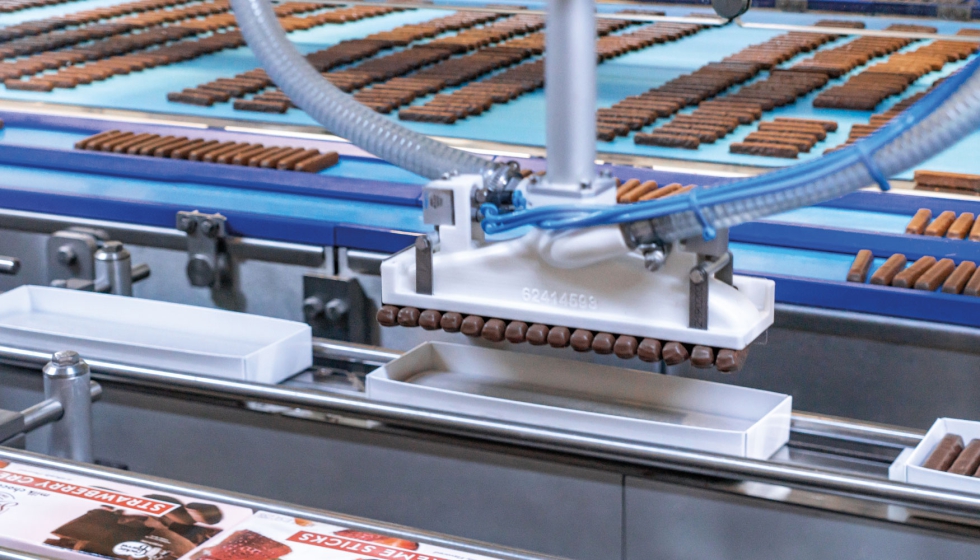The Evolution and Innovation in Snack Packaging Machines: A Comprehensive Guide
2024-02-13
Introduction
In the fast-paced world of consumer goods, the snack industry stands out for its dynamic nature, driven by evolving consumer preferences, technological advancements, and the relentless pursuit of efficiency and sustainability. At the heart of this industry’s ability to meet these demands are the snack packaging machines, sophisticated systems designed to package a wide variety of snack products at high speeds, maintaining product freshness and extending shelf life. This article delves into the intricacies of snack packaging machines, covering primary, secondary, and tertiary packaging, handling systems, and the latest trends shaping the future of snack packaging.

The Fundamentals of Snack Packaging
Primary Packaging: The First Line of Defense
Primary packaging machines play a crucial role in the snack industry, providing the first layer of protection and directly containing the product. These machines are designed to handle a variety of materials, including flexible films, foil, and paper, which are used to package snacks in bags, pouches, or wraps. The primary focus is on preserving the freshness, flavor, and quality of the snacks while ensuring convenience for the consumer.
Key Technologies in Primary Packaging:
- Form-Fill-Seal (FFS) Machines: These are the workhorses of snack packaging, capable of forming the package from a roll of material, filling it with the snack product, and sealing it, all in a continuous operation. FFS machines come in vertical and horizontal configurations, catering to a wide range of product types and packaging designs.
- Flow Wrapping: Ideal for individually wrapping snacks, flow wrappers encase products in a tight seal, perfect for bars, candies, and other single-serve items.
Secondary Packaging: Enhancing Protection and Presentation
Secondary packaging serves two primary purposes: it offers additional protection to the products and serves as a marketing tool. Machines in this category handle the grouping of primary packages into larger units, making them easier to transport, display, and sell.
Innovations in Secondary Packaging:
- Cartoning Machines: These machines place primary packages into boxes or cartons, which can be easily stacked and displayed in retail environments.
- Multipack Wrapping: For products sold in multiples, such as snack bars or small bags of chips, multipack wrappers bundle them together using shrink wrap or other materials.

Tertiary Packaging: Logistics and Distribution
The outermost layer, tertiary packaging, is designed for bulk handling and transport. This packaging level is crucial for protecting the products during shipping and handling, ensuring they reach the consumer in perfect condition.
Tertiary Packaging Solutions:
- Case Packers: These machines load secondary packages into larger boxes or cases, which are then sealed and labeled for shipment.
- Palletizing Robots: For ultimate efficiency in distribution, palletizing robots stack cases on pallets in pre-defined patterns, readying them for transport.

Handling Systems: The Backbone of Packaging Lines
Efficient handling systems are critical for the seamless operation of snack packaging lines. These systems include conveyors, sorters, feeders, and robotic arms, designed to move products smoothly between different packaging stages without damage.

Trends Shaping the Future of Snack Packaging
Sustainability: A Driving Force
The snack industry is increasingly focusing on sustainable packaging solutions, driven by consumer demand and regulatory pressures. Innovations include biodegradable materials, recyclable packaging, and designs that minimize waste.
Smart Packaging: Enhancing Consumer Engagement
Smart packaging technologies, such as QR codes and NFC tags, are being integrated into snack packaging, offering consumers additional product information, authenticity verification, and interactive experiences.
Customization and Personalization
Advancements in digital printing and on-demand packaging systems allow for greater customization and personalization of snack packaging, catering to the desire for unique, individualized products.
Conclusion
The snack packaging machine industry is at the forefront of technological innovation, sustainability, and consumer engagement. As manufacturers continue to invest in new technologies and materials, the future of snack packaging looks promising, with advancements that not only improve efficiency and sustainability but also enhance the consumer experience.




